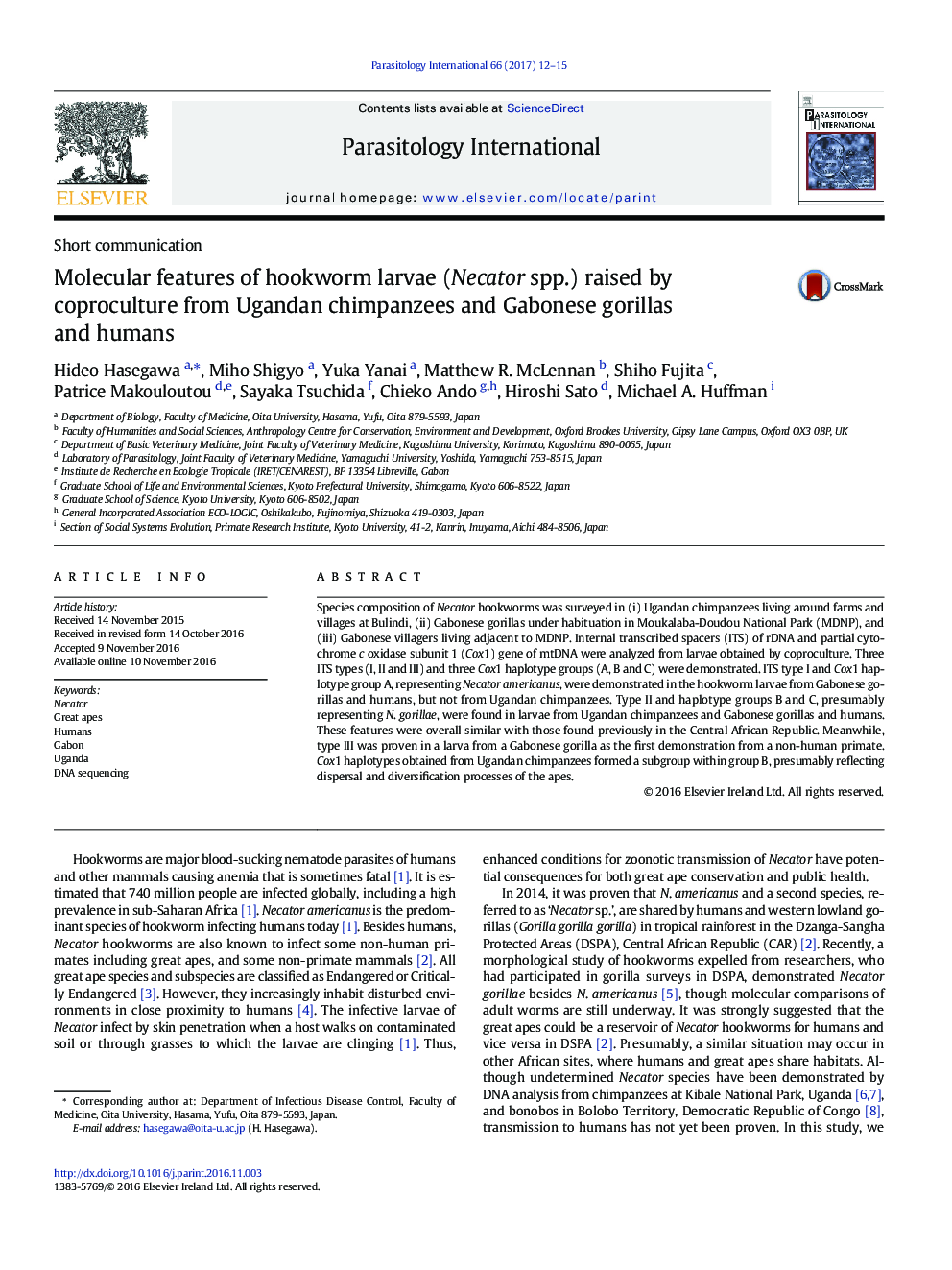| Article ID | Journal | Published Year | Pages | File Type |
|---|---|---|---|---|
| 5674181 | Parasitology International | 2017 | 4 Pages |
â¢ITS and Cox1 were sequenced for Necator of great apes and humans in Uganda and Gabon.â¢Necator americanus and N. cf. gorillae are 'shared' by great apes and humans.â¢Chimpanzees may have low susceptibility to N. americanus in the wild.â¢Cox1 phylogeny of Necator reflects dispersal and diversification of great apes.
Species composition of Necator hookworms was surveyed in (i) Ugandan chimpanzees living around farms and villages at Bulindi, (ii) Gabonese gorillas under habituation in Moukalaba-Doudou National Park (MDNP), and (iii) Gabonese villagers living adjacent to MDNP. Internal transcribed spacers (ITS) of rDNA and partial cytochrome c oxidase subunit 1 (Cox1) gene of mtDNA were analyzed from larvae obtained by coproculture. Three ITS types (I, II and III) and three Cox1 haplotype groups (A, B and C) were demonstrated. ITS type I and Cox1 haplotype group A, representing Necator americanus, were demonstrated in the hookworm larvae from Gabonese gorillas and humans, but not from Ugandan chimpanzees. Type II and haplotype groups B and C, presumably representing N. gorillae, were found in larvae from Ugandan chimpanzees and Gabonese gorillas and humans. These features were overall similar with those found previously in the Central African Republic. Meanwhile, type III was proven in a larva from a Gabonese gorilla as the first demonstration from a non-human primate. Cox1 haplotypes obtained from Ugandan chimpanzees formed a subgroup within group B, presumably reflecting dispersal and diversification processes of the apes.
Graphical abstractDownload high-res image (175KB)Download full-size image
